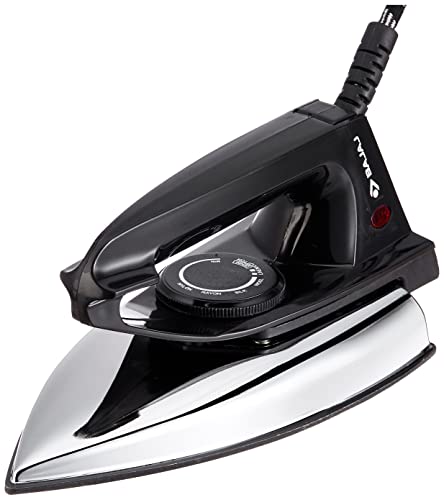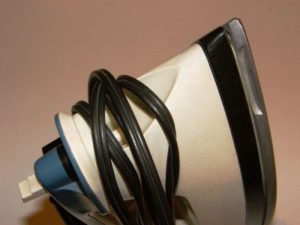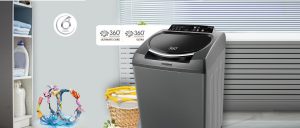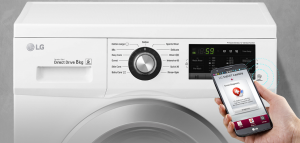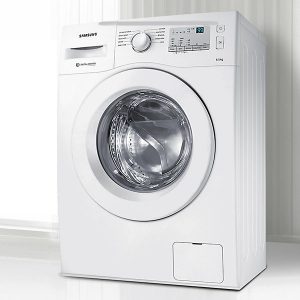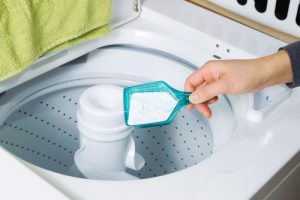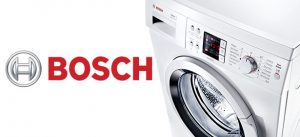Best Dry, Steam and Travel Iron in India in 2024
An electric Iron is an appliance that is used to remove wrinkles from clothes. Even though wrinkle-free fabrics are gaining popularity, ironing clothes is an essential activity in most households. Although it is common to get the ironing done at a laundry or by a local Iron-man, still people do like to keep an electric Iron at home for occasional use.
Electric-iron works by heating the yarn molecule after which the fabric is ready to orient, and when pressure is applied, it changes shape. On cooling, it retains the shape. The presence of steam/water further loosens the molecular bonds in fabrics such as cotton or linen, making it easier to iron. In the past, ironing was done using dry iron while hands were used to sprinkle water. But today, different types of Irons are available to handle different kinds of requirements. All Irons come with thermostat control where they do not let the temperature go beyond a limit. But then some also have a steam generator or water mist inbuilt. Then there are foldable Irons that are highly portable which are suitable for travel. But they are all able to do the primary job: Ironing. You can get cheap no-frills options to high priced value-added options that have advanced steam-spread technology and soleplates. We have put up a buying guide below, but first let’s take a look at some good & popular irons in India in 2024.
Best Irons in India in 2024
Some of the best Irons available on Amazon in India in 2024
 Bajaj DX-7 1000W Dry Iron with Advance Soleplate and Anti-bacterial German Coating Technology, White
Bajaj DX-7 1000W Dry Iron with Advance Soleplate and Anti-bacterial German Coating Technology, White
 USHA EI 1602 1000 W Lightweight Dry Iron with Non-Stick Soleplate (Multi-colour)
USHA EI 1602 1000 W Lightweight Dry Iron with Non-Stick Soleplate (Multi-colour)
 Bajaj Majesty DX-11 1000W Dry Iron with Advance Soleplate and Anti-bacterial German Coating Technology, White and Blue
Bajaj Majesty DX-11 1000W Dry Iron with Advance Soleplate and Anti-bacterial German Coating Technology, White and Blue
 Philips HI114 1000-Watt Dry Iron
Philips HI114 1000-Watt Dry Iron
 Philips Classic GC097/50 750-Watt Dry Iron (Peach)
Philips Classic GC097/50 750-Watt Dry Iron (Peach)
 Bajaj DHX-9 1000W Heavy Weight Dry Iron with Advance Soleplate and Anti-Bacterial German Coating Technology, Ivory
Bajaj DHX-9 1000W Heavy Weight Dry Iron with Advance Soleplate and Anti-Bacterial German Coating Technology, Ivory
 Bajaj DX-2 600W Dry Iron with Advance Soleplate and Anti-bacterial German Coating Technology, Black
Bajaj DX-2 600W Dry Iron with Advance Soleplate and Anti-bacterial German Coating Technology, Black
 Usha Goliath GO1200WG Heavy Weight 1200-Watt Dry Iron, 1.8 Kg(Red)
Usha Goliath GO1200WG Heavy Weight 1200-Watt Dry Iron, 1.8 Kg(Red)
 Bajaj DX-2 600W Dry Iron with Advance Soleplate and Anti-Bacterial German Coating Technology, Grey
Bajaj DX-2 600W Dry Iron with Advance Soleplate and Anti-Bacterial German Coating Technology, Grey
Buying Guide:
How much electricity does an Iron use?
Electric Irons just like other heating or cooling appliances have a thermostat. The electricity consumption of an Iron depends on the temperature one sets of his own or follows the recommended temperature setting marked on the Iron. Upon the testing of an electric iron (non-steam) it is observed that the electrical heating component of the Iron remains ‘on’ for roughly 30% of the time. This means the Iron, which is rated 1200 W consumes approximately 0.4 units of electricity in 1 hour.
Power consumed = Wattage Rating of Iron/1000 * No. of Appliance * 30%
= (1200/1000) * 1 * (30/100)
=0.36 or approximately equal to 0.4 units
A typical household uses an electric Iron for about 10 hours a month. This means an average family will use about four units in a month for Ironing. Because the usage of electric Iron is limited, there is no energy efficiency rating available for Irons globally. In this view, the recommendations below are not based on energy efficiency but usefulness, safety, and features.
Technology
Electric Irons have a simple design. The heating happens through a sole plate which is a metallic or ceramic plate that is heated using a resistive heating element namely Nichrome which is an alloy of 80% Nickle and 20% Chromium and also called Nichrome 80/20. Many other features are then added to improve the user experience of an Electric Iron. Let’s look at different things in an electric iron which can help you do better Ironing and selection of right Iron.
Soleplates
A soleplate or the base of an electric Iron is an essential part of an Iron. It’s material, geometry, thickness and method of the steam ejection; all can impact how good it works. The right quality can ensure that it is non-sticky, easy to clean and scratch-resistant.
Different types of material used in Soleplates:
- Aluminum: It conducts heat well but is hard to clean, reactive to the environment and scratches easily. It is not ideal for household applications.
- Stainless Steel: It is an alloy of Iron and Chromium. Stainless Steel is hard-wearing, conducts heat well and uniformly, glides well, does not scratch, is corrosion-resistant and usually an excellent option to buy. Please make sure to clean the surface of the soleplate with a fine cloth before use.
- Non-stick: Non-Stick soleplates are made by coating a metal like Aluminium or Stainless steel with Teflon or Ceramic. They are easy to maintain and distribute heat evenly. Their only limitation is that the coating often degrades with time. The Ceramic coating helps it in gliding but also scratches/cracks easily.
Geometry
The geometry of an electric Iron is a crucial aspect to consider before buying an electric Iron. Precise geometry is vital for gliding and covering all corners of a stitched cloth. The best shape is the one with a pointed front and an oval rear. Most manufacturers use this shape these days, but just in case you find one which does not have it, then avoid buying it.
Thickness
Lower thickness is preferred with a stainless plate for quick heating.
Automatic/Non-Automatic
Electric Irons have thermostats that help them control the temperature. Irons will switch off as soon as the desired temperature is attained. This feature is there in all the Irons. But some Irons do not have an indicator which shows if the Iron is off or not. It is best to avoid buying such Iron. The indicator is handy to tell you if the Iron is switched on or not.
Additionally, some Irons have an LED display to show temperature continuously. It is also quite useful to have different temperature settings for different kinds of cloths. Some Irons may just let you change the temperature to the desired setting. But some have different presets for different types of fabrics. These preset help you avoid any damage to the fabrics. It is always better to look at different presets available in an Iron before buying one.
Some Irons also has a feature to switch off the Iron when not in use automatically. They have intelligent sensors that sense if an Iron is in standing position for 10 minutes or is left unattended on its soleplate for more than 1 minute. It switches off the Iron immediately when it senses such a situation. Such a sensor is like the ultimate safety feature.
Water Spray and Steam generator
What was a manual activity in the past has become automated in modern electric Irons. Many Irons these days come with a water spray or steam generator. But not every Iron with water spray/steam generator is similar. Here are a few features that are different:
- Continuous fill: This feature allows you to top up the water tank without having to turn off the iron. You will have to select the water tank capacity based on your requirements.
- Pressurized steam: This feature helps steam penetrate fabric deeply to remove creases quickly. There are Irons with an option to set how much steam to inject on a scale of 0-9. Steam ejection is required for linen and cotton cloth. For other types of cloths, mist shall serve the purpose. The steam chamber has a safety valve, water level indicator for mist and steam. The requirement of steam will be more when ironing linen and cotton cloth. Otherwise, the small or medium size is adequate.
- Anti-scale: This feature stops limescale from building up, thereby preventing damage to your iron. If this feature is not there, then you will have to use RO water in your Iron.
Vertical Ironing by steam bust
Sometimes you may have a requirement to iron a fabric that is hanging. It could be Ironing your curtains, or Ironing a wool, silk or nylon fabric. For all such needs, you get Irons that can do vertical Ironing with steam busts. In this process, the wrinkles get removed due to heat, water and weight of the fabric. Vertical Ironing is not useful for lightweight fabric.
Traveling Iron
If you want to carry an Electric Iron along with you while traveling, then you can buy a travel Iron. These Irons are low wattage Irons without any water spray or steam jet functionality. These are small Irons that can easily be folded and kept in your luggage without occupying much space.
Power Rating
The power rating of Iron is generally between 1.2 to 2 kW. For Irons requiring the consumption of stream, 2 kW steam Iron is better.
Check for other features
There are several other features that you can look for based on your needs:
- Cool Touch Body: With this feature, the body of the Iron does not get hot, and it makes it easy to hold the Iron.
- 360 degree Swivel Chord: This feature makes the movement of the Iron very easy. The chord does not get tangled, and it does not get in the way of the movement of the Iron.
- Button groove: For easy Ironing under the button.
- Anti Drip Feature: To avoid any water dripping when the steam temperature is not achieved (good for vertical ironing).
- Cordless Iron: These days you can get cordless Irons in the market which may sound very enticing. However, there are some challenges with them. Firstly, they need a charging station which cannot fit in every Iron-board. With the absence of a cord, the heating of soleplate is not continuous. So you will have to take it back to the charging station frequently. This may result in loss of time and efficiency. And these Irons are expensive.
About the Author:
Mr Mahesh Kumar Jain is an Alumnus of the University of Roorkee (IIT Roorkee) with a degree in Electrical Engineering who has spent 36 years serving the Indian Railways. He retired from Indian Railways as a Director of IREEN (Indian Railways Institute of Electrical Engineering) and has also served as Principal Chief Electrical Engineer at many Railways. He has performed the responsibility of working as Electrical Inspector to Govt. of India. Mr Mahesh Kumar Jain is having a passion for electrical safety, fire, reliability, electrical energy consumption/conservation/management, electrical appliances. He currently serves as a consultant at Nippon Koi Consortium in the field of power distribution and electric locomotive. More from this author.








